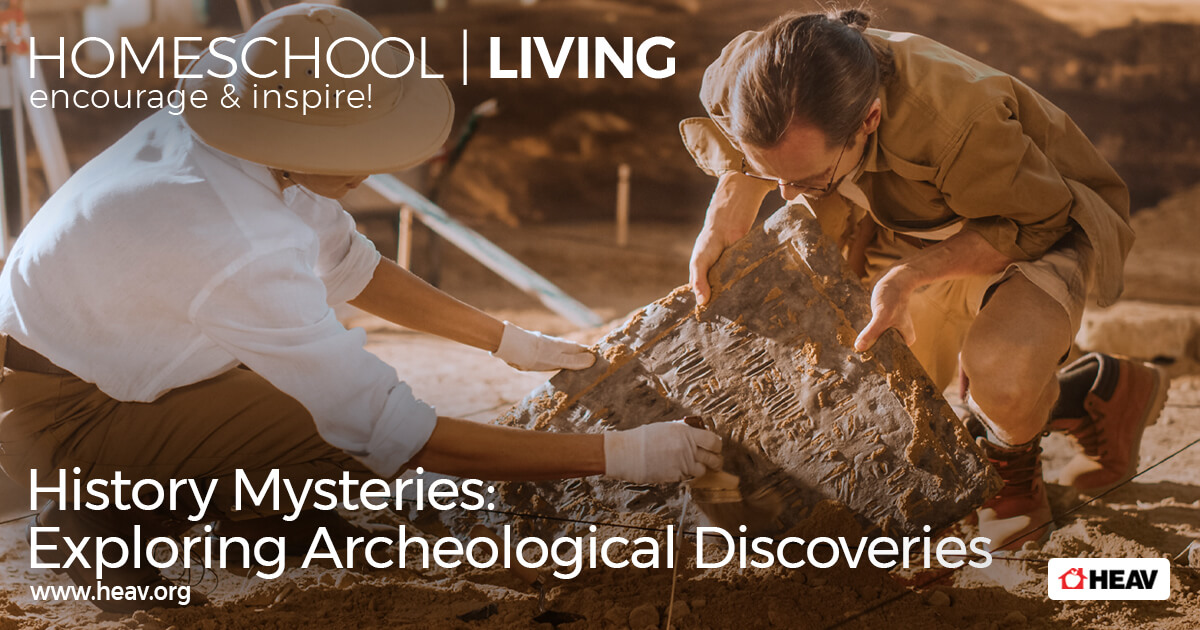History Mysteries: Exploring Archaeological Discoveries
Archaeology is a fascinating topic for a unit study, and there are tons of great hands-on archaeology activities that can provide additional learning opportunities for students of all ages. Check out this Homeschool Living for some great archaeology unit study ideas, hands-on archaeology activities, and more!
November 4, 2022, marks the 100-year anniversary of the discovery of King Tutankhamun’s tomb in Egypt, making this the perfect time to introduce an archaeology unit study into your homeschool. While you’re not likely planning a trip to Egypt in the near future, this travel blog has a great overview of who King Tutankhamun was, the discovery and excavation of his tomb, and its impact on, not only the fields of history and archaeology, but on the world as a whole.
Archaeology & History Hands-On Activities
For some ideas of other historical wonders to explore, check out these ten major archaeology discoveries, including Tutankhamun’s tomb, the Rosetta Stone, the Dead Sea Scrolls, and more.
This soil layers activity using LEGO is the perfect activity for active students, and a great way to incorporate hands-on learning into your archaeology unit study. Though this activity was originally geared toward a study of geology, it is easy to modify and adapt into an illustration of stratigraphic dating in archaeology. Find more information about stratigraphic dating and archaeology, as well as an illustration to use with your LEGO activity, here.
You Can Dig Archaeology Too!
It might sound weird to describe archaeology as looking for clues in the trash, but it’s really not too far from an accurate description. This article about an archeological dig and its findings in Florida is a great example of the things we can learn and the inferences we can make from the discovery of past cultures’ discarded items. Play this Great Garbage Mystery game with your students to let them practice making inferences and hypotheses from the clues you provide. This is a simple activity to pull together with household items, and the “clues” can be changed up easily, so the game can be played several times if it sparks your students’ imaginations.
This mini archaeology dig activity from Blue House School does require a bit of setup on the parent’s end, but there is a great payoff in letting your child organize and conduct his own archaeological dig, while learning how to document his findings. It is also a well-contained project that can easily be performed indoors, so it can help satisfy some cravings for outdoor play even when the weather is not conducive.
Enjoy this article?
Browse our HEAV blog archive for more interesting reads and related homeschool lifestyles here.








